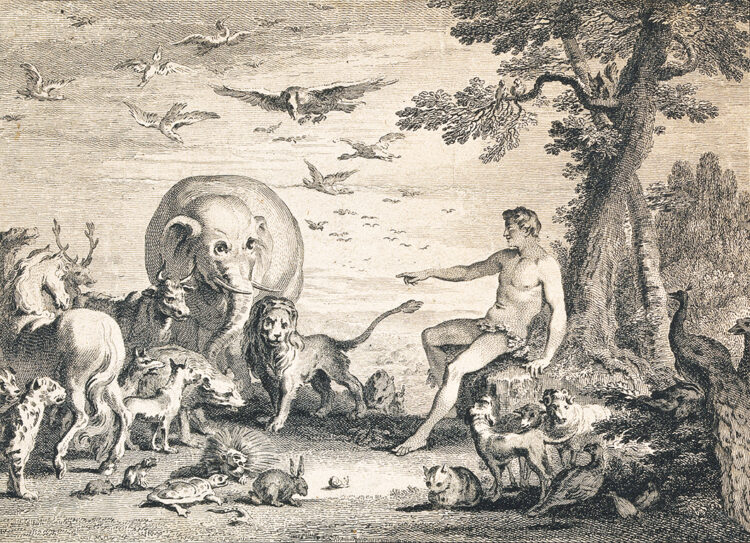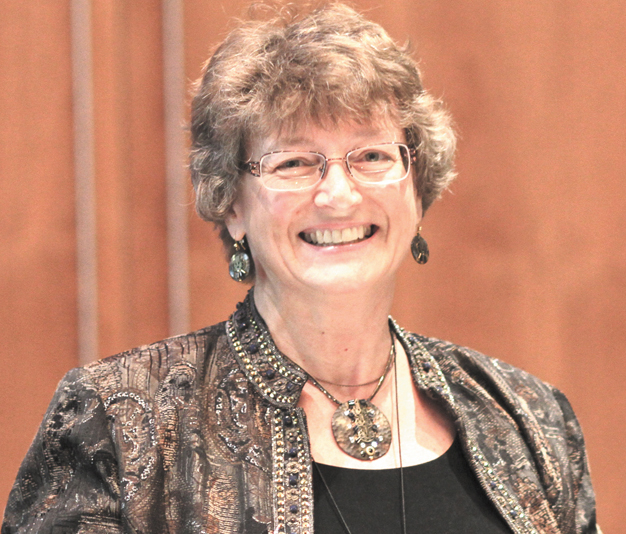The pinnacle of creation

Considering Creation Series
Jewish Family Education with Candace R. Kwiatek
Commonly referred to as the “king of beasts,”the lion owes its royal nickname in part to a prominent crown-like mane, but even more to its status as an apex predator, one of a select few at the top of the world’s food chains.
Having at one time inhabited five continents, the lion symbolized kingship as far back as ancient Sumer more than 7,000 years ago. Despite its preeminence in the animal world, however, the lion is not the pinnacle of creation.
“God said, ‘Let the earth bring forth every kind of living creature: cattle, creeping things, and wild beasts of every kind.’ And it was so. God made wild beasts of every kind and cattle of every kind, and all kinds of creeping things of the earth. And God saw how good this was.
“Then God said, ‘Let us make man (adam, humankind) in our image, according to our likeness. They shall rule the fish of the sea, the birds of the sky, the cattle, the whole earth, and all the creeping things that creep on earth.’ And God created man (ha-adam, the human) in His image, in the image of God He created him; male and female He created them. God blessed them and God said to them, ‘Be fertile and increase, fill the earth and master it; and rule the fish of the sea, the birds of the sky, and all the living things that creep on earth.’
“God said, ‘See, I give you every seed-bearing plant that is upon the earth, and every tree that has seed-bearing fruit; they shall be yours for food. And to all the animals on land, to all the birds of the sky, and to everything that creeps on earth, in which there is the breath of life, (I give) all the green plants for food.’ And it was so. And God saw all that He had made, and found it very good. And there was evening and there was morning, the sixth day (Gen. 1:24-31).”
In a few words, the Torah captures the bare bones of the explosion of diverse animal life on land. It doesn’t presume to offer a timeline or evolutionary history, except to say that untold land animals of all kinds preceded humans, whose design was singular and distinctive, and a step removed from that of the animals.
“Let the earth bring forth…” highlights the key feature of land’s living creatures: inextricably linked to the earth where all must breathe, eat, reproduce, and move in ways fitting to their environments.
With little fanfare, God made land animals from the same template as those of the sea and air. Ruled by nature, they creep, they graze, they stalk. It’s a world in which the lion is the king of beasts, and it is good.
Then God proposes the creation of human beings, the pinnacle of creation, made directly by “us…in our image, in our likeness.”

Various commentators suggest God is using the “royal we” or speaking to the angels. But context suggests a more compelling explanation: God is speaking to the animals, proposing a wholly new creature that will combine elements of both the heavens and the earth.
Its uniqueness is captured by the threefold use of the Hebrew bara, created sui generis, without compare.
Certainly humans are the ‘likeness’ of animals in their physicality and nature, necessary for life on earth. Interpretations of ‘the image of God’ are more varied, however.
Some suggest it means conscience and free will, others speech and intellect, and still others spirituality or a soul.
These theories notwithstanding, the text is quite clear. Throughout the Tanakh (the Jewish Bible), as well as in ancient Near East literature and culture, images of gods — whether monuments, statues, or living beings — are not gods themselves but rather embodiments of their essence, reminders of their authority or signals of their presence.
Until the Bible, the only human described as the image of a god was the ruling king, but Genesis upends this, declaring all humans are like kings, equally fashioned in God’s image.
Thus, theologian Peter Enns concludes, “The phrase ‘image of God’ is not about what makes us human. It is about humanity’s unique role in being God’s kingly representatives in Creation.”
Echoing God’s role in the universe, humans’ royal role is to bring order to the world by mastering the earth and ruling over all living creatures, not as the king of beasts or an apex predator, but as a monarch with divinely-inspired integrity and — as the biblical text suggests — a desire for goodness.
This notion that humans are “to rule over nature is in stark contrast to the pagan worldview, according to which nature ruled over man,” observes biblical commentator Dennis Prager.
And yet, if humans don’t rule over nature, he concludes, nature will inevitably rule over them, enslaving them not only to the vicissitudes of the physical world, but also to the same instincts, desires, and passions as all animal life, with no escape.
In our focus on what divine qualities make us intrinsically transcendent, we miss the moral of Genesis. To be fully human, truly “in God’s image,” we must rule not only other living creatures, but also our own selves.
Literature to share
The Diary of Asser Levy: First Jewish Citizen of New York by Daniela Weil. In 1654, an unexpected turn of events landed the first Jews in New York. Among them was Asser Levy who, less than a year later, was at the forefront of the fight for religious, civil, and political rights. Levy’s story is told through imagined diary entries, based on historical documents and expert interviews for historical accuracy, accompanied by maps, documents, and related photos. Engaging, historically accurate, and packed with information, historical fiction doesn’t get better than this. Highly recommended for the target middle-grades audience as well as adults.
The Lost Family: How DNA Testing Is Upending Who We Are by Libby Copeland. As more Americans use DNA testing to seek lost relatives, understand medical conditions, or build family trees, untold — and often unwanted — secrets are being unearthed. By weaving together individual stories, scientific explanations, and social and bioethical issues, Copeland offers a thoughtful overview of the challenges presented by DNA genealogy testing and how they might guide thinking and discussion about family, origins, and identity.
To read the complete April 2021 Dayton Jewish Observer, click here.


